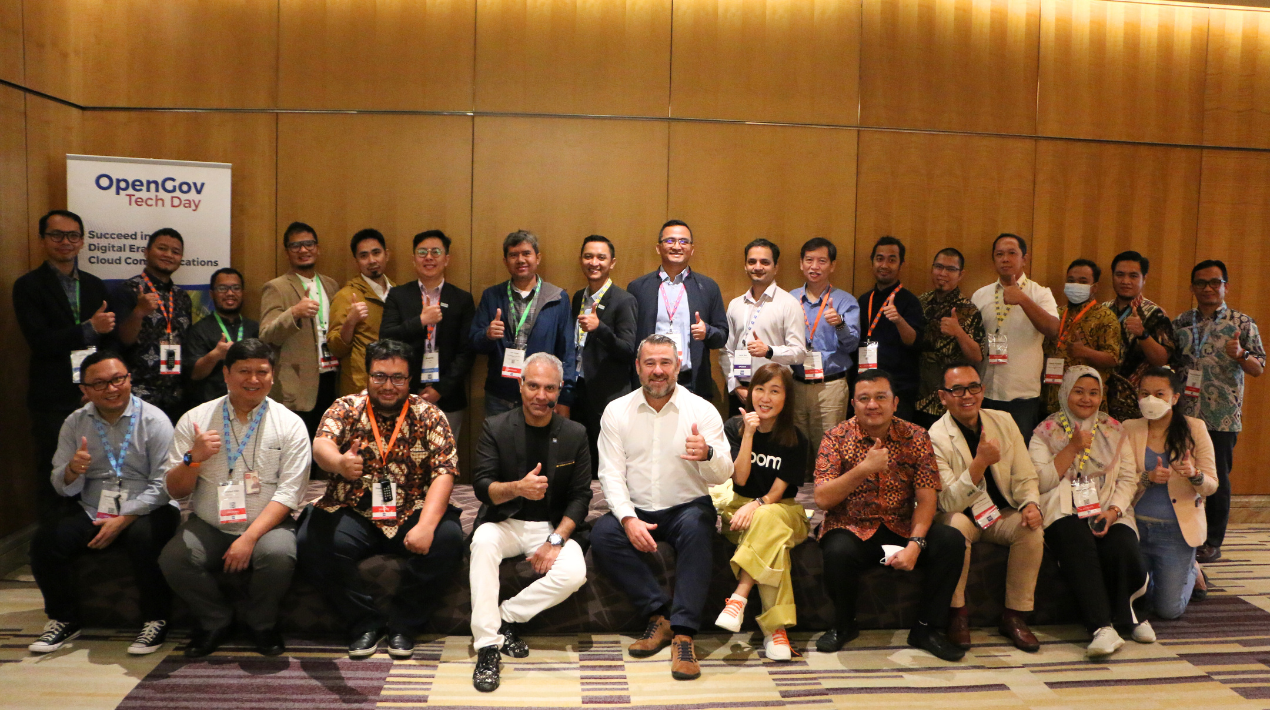
Cloud communications have revolutionised collaboration, enabling seamless interactions, enhanced teamwork and improved customer engagement. Leveraging cloud-based communication tools empowers companies to overcome geographical barriers, optimise operations and explore untapped growth opportunities.
Cloud communications offer significant advantages over traditional methods. Firstly, they provide scalability and flexibility, allowing businesses to easily adapt to changing communication requirements. Secondly, they are highly agile and cost-effective, whether it involves adding new users, expanding to new locations or integrating with other business systems.
One of the key benefits of cloud messaging is its ability to integrate multiple communication methods into a unified platform. Voice calls, video conferencing, instant messaging and email can all seamlessly work together, enabling workers to collaborate and communicate from any device, at any time, and from anywhere. This integration enhances efficiency, promotes teamwork, and facilitates informed decision-making.
Companies gain access to advanced tools and features through cloud communications, including intelligent call routing. This feature ensures that incoming calls are directed to the most appropriate person on the team, leading to improved customer service and reduced wait times.
With interactive voice response (IVR), call queueing and personalised greetings, businesses can provide exceptional customer experiences that feel professional and tailored to each individual.
Seamless integration with customer relationship management (CRM) systems allows for the smooth flow of information, empowering agents with access to client data and enabling them to deliver highly personalised service.
By leveraging all these capabilities, businesses can enhance their overall communication efficiency and deliver a better experience to their customers. These features ensure that every interaction with a customer is handled efficiently, enhancing customer satisfaction and reinforcing a positive brand image.
The OpenGov Tech Day on 8 June 2023 at The Westin in Jakarta, Indonesia was a high-level workshop for decision-makers to explore the latest trends and benefits of cloud technology across Indonesia’s public sector, business, education, financial services and healthcare sectors.
Opening Remarks

Mohit Sagar, CEO & Editor-in-Chief, OpenGov Asia acknowledges that Cloud communications play a vital role in the digital era, enabling seamless communication and collaboration in technology-dependent organisations. “Innovative Unified Communications as a Service (UCaaS) solutions prioritise collaboration, integrating various tools into a centralised platform for enhanced productivity.”
Cloud communications offer feature-rich solutions with intuitive interfaces, facilitating easy adoption and delivering user-friendly experiences. They encourage broader adoption within organisations by providing simple implementation and streamlined processes.
Mohit believes that a user-friendly and intuitive user experience (UX) is crucial for driving the adoption of cloud communications within organisations. By prioritising intuitive UX design, organisations can remove barriers to entry and increase adoption rates, resulting in enhanced productivity, seamless collaboration, positive user feedback and user empowerment.
“Intuitive UX designs simplify onboarding and usage, increasing adoption rates among employees and stakeholders,” he further explains. “These designs offer user-friendly interfaces and streamline workflows, making it easy for users to start using cloud communications tools.”
They also improve productivity by streamlining tasks and reducing complexity. Features like drag-and-drop interfaces, contextual menus and customisable layouts empower users to work efficiently and focus on their tasks rather than struggling with the technology.
Seamless teamwork is made possible through an intuitive user experience that offers a suite of user-friendly communication and collaboration tools. Real-time messaging, seamless file sharing, and presence indicators elevate teamwork, empowering employees to effortlessly connect, share information, and collaborate with utmost efficiency.
A good user experience (UX) leads to positive user feedback, which in turn increases user satisfaction. Satisfied users are more inclined to advocate for the adoption of cloud communications solutions within their organisations, fostering wider acceptance and greater uptake of these tools.
According to Mohit, intuitive UX empowers users by providing them with the ability to tailor their communication and collaboration experiences. Through a range of customisation options, personalisation features and user-friendly settings, individuals can modify cloud communications tools to align with their specific preferences and work styles.
Cloud-native platforms are crucial for organisations to achieve rapid innovation in the digital era. These platforms enable agile development and deployment of new features, allowing organisations to quickly adapt to market demands.
The agility and flexibility required to scale solutions based on demand are provided by cloud-native platforms. These platforms also support the development of user-friendly interfaces and workflows, enhancing the overall user experience. Additionally, integration and interoperability with other cloud-based applications and services enable seamless collaboration and facilitate a smooth transition to cloud-native solutions.
In addition, video-first solutions are essential for enhanced communication, offering high-quality video conferencing, visual and blended multi-modal communication, and support for transformation projects. They adapt to the needs and preferences of different worker generations, driving effective collaboration and project outcomes.
In cloud communications, architectural extensibility plays a crucial role in meeting future requirements. It benefits service providers by fostering innovation and competitiveness, while also empowering third-party developers to create custom solutions that cater to specific needs. Additionally, architectural extensibility allows for cost-effective scalability for organizations, ensuring adaptability to evolving communication needs and providing a future-proof infrastructure that can grow and evolve alongside technological advancements.
“Cloud communications solutions need to meet both current and future prerequisites to enable successful implementation and adoption,” Mohit elaborates. “By addressing present needs and being adaptable to evolving requirements, these solutions enhance communication, collaboration, and productivity while remaining flexible to emerging technologies and changing business landscapes.”
Meeting current prerequisites is vital for a smooth transition to cloud communications. Solutions should align with existing infrastructure, integrate seamlessly with other systems, adhere to security protocols, and be user-friendly. By meeting these prerequisites, disruptions are minimised and organisations can ensure a successful implementation.
Cloud communications solutions must also adjust and adapt to changing requirements over time. Technology and business needs are constantly evolving and solutions need to be flexible and agile.
“By incorporating new features, technologies, and standards, these solutions can meet future requirements and keep pace with emerging trends,” Mohit concludes.
Welcome Address

Nathan Guy, Head of UCaaS, Asia Pacific, Zoom, highlighted the findings of a survey indicating that businesses globally made substantial technology investments during the pandemic, underscoring the importance of understanding customer and employee requirements.
However, despite this recognition, finding the right approach remains challenging, as the need for flexibility in technology stacks becomes crucial in the face of constantly evolving circumstances and ongoing economic uncertainty.
“The question of whether the future workplace truly brings improvement for teams and customers is an important one. At Zoom, we believe it does,” Nathan says. “But to be successful, there are three key areas that must the addressed.”
Firstly, evolving collaboration and productivity frameworks are crucial to keeping up with the changing dynamics of work. Secondly, fostering better personal connections within the workplace helps create a positive and engaged environment. Lastly, meeting the updated expectations of both customers and employees is vital for success.
A report highlighted the significant financial investment of S$15 billion per week in technology during the pandemic, emphasising the need to establish a strong foundation in the technology stack to gain a competitive advantage for the future, Nathan reveals.
Moreover, the future needs of a hybrid workplace must embrace Technology Infrastructure, Flexibility, Communications and Collaboration, Emotional Well Being, and Training and Development.
Voice is considered the foundation of digital transformation, Nathan observes, serving as a natural bridge between the physical and digital realms. “In an increasingly connected world, voice engagement should be at the core rather than the periphery. IP Voice offers affordability, ubiquity, and high-quality communication, making it a crucial aspect of cloud-based voice strategies.”
Voice remains critical for future work, both in terms of customer and employee engagement, and businesses continue to invest in this growing market. Organisations report improved engagement, increased productivity, and enhanced collaboration through the adoption of advanced customer service applications.
According to Nathan, legacy collaboration infrastructure is being replaced by cloud communications to meet the needs of hybrid and remote work. The integration of various collaboration features, including messaging, meetings, conferencing, team chat, and content sharing is crucial for enterprises’ digital aspirations.
A collaboration platform is built on core technology, offering communication and collaboration solutions tailored to different industries and departments. Zoom has invested significantly in AI to enhance the collaboration experience. Ultimately, the focus is on serving customers and helping them thrive in the new era of work.
Customer-facing teams face various challenges that need to be addressed. By empowering these teams to become subject matter experts, organisations can provide customers with personalised and enhanced experiences.
Nathan reiterates that the goal is to bring product innovation together into a comprehensive solution that powers the modern workday for knowledge workers and teams, while also enabling better collaboration with external customers to drive business growth.
This encompasses employee collaboration, starting from checking calendars, chatting and emails in the morning, to meeting collaboration, casual collaboration through huddles, and concluding with phone calls. Similarly, customer collaboration includes marketing events, webinars, sales processes, and overall customer experience, all accessible through a single interface.
The focus is on maximising Customer Lifetime Value through the synergy between employee experience (EX) and customer experience (CX).
“While customer service leaders recognise the importance of consistently delivering good experiences, only a third of customers feel that customer service organisations are improving,” Nathan shares. “Losing a significant percentage of customers due to bad experiences can severely harm a business.”
Studies indicate that customer expectations have risen over the years, making it crucial for businesses to shift quickly and excel in CX. This highlights the challenge of meeting customer needs in an uncertain environment while facing resource constraints.
Nathan spoke about a Global CX Excellence Report which identified six pillars of CX excellence: personalisation, trust, minimising customer effort, meeting expectations, resolution and empathy. “Meeting these customer expectations requires holistic thinking and cross-team collaboration.”
The six pillars of CX excellence identified by the Global CX Excellence Report are personalisation, trust, reducing customer effort, meeting expectations, resolution, and empathy, Nathan has also stressed. Personalisation, empathy, and minimising time and effort are among these that are particularly important. It takes cross-team cooperation and comprehensive thinking to meet these client expectations,” says Nathan.

Jayraj Nair, Customer Experience Lead-ASEAN, Zoom acknowledges that to redefine and transform the CX and EX, it is important to address the challenges of siloed teams and disconnected tools. According to reports, a total experience approach is vital and 60% of large enterprises are expected to adopt this by 2026.
To deliver consistently good customer experiences, it is essential to bring together employee productivity and CX strategies. By combining these two elements effectively, businesses can create a harmonious and seamless interaction between the company and its customers, resulting in enhanced customer satisfaction.
Organisations that provide a total experience, connecting employees and customers, are projected to outperform competitors in satisfaction metrics by 2024.
Employee productivity refers to the efficacy and efficiency with which employees carry out their duties within an organisation. When employees are productive, they can provide customers with superior service and support, ensuring that their requirements are met promptly and satisfactorily.
Similarly, CX strategies involve the planning and execution of initiatives designed to improve the overall consumer experience when interacting with a company. This includes personalised communication, streamlined procedures, user-friendly interfaces and effective problem resolution.
Zoom offers a comprehensive CX + EX platform that seamlessly integrates employee and customer experiences, says Jayraj. This unified experience is made possible by leveraging the end-to-end capabilities of the Zoom platform, allowing customers to access the desired functionality from the cloud when and where they need it.
“The introduction of the Zoom Contact Centre is seen as an exciting innovation that drives loyalty and retention through prompt and personalised customer interactions,” Jayraj explains. “With Zoom handling the heavy lifting, organisations can focus on their employees and customers.”
Closing Remarks
Nathan expressed his gratitude for the participants’ valuable time and their active participation in the Lego-building exercises. He also acknowledged their insightful comments, which added depth to the discussions.
He reiterated the importance of prioritising customer service and stressed the need to consistently provide a positive experience throughout the entire organisation. By maintaining a customer-centric approach, businesses can build strong relationships, foster loyalty, and achieve long-term success.
Nathan shared that Zoom has transformed from a simple application into a comprehensive platform and highlighted the significant business value that comes with utilising Zoom’s diverse range of solutions. These include Zoom Phone, telephony, team chats and meeting rooms that offer businesses a holistic communication and collaboration experience, enabling seamless connectivity, efficient team communication, and productive meetings.
“These solutions can be integrated and readily used for immediate benefit,” he confirmed.
In addition, Nathan emphasised the importance of each step in developing a customer experience strategy. This includes incorporating web chat, video, phone capabilities and other relevant tools. The focus is on providing the right tools to serve both internal and external customers, to enhance the user experience (UX) and customer experience (CX). By aligning these experiences seamlessly, businesses can ensure that interactions with customers are efficient, effective and ultimately satisfying for all parties involved.
Mohit acknowledged the significance of technology partnerships in driving innovation, accelerating development and fostering success across various industries.
By collaborating with external technology partners, businesses can access specialised expertise, leverage cutting-edge technologies and combine resources to create innovative solutions and stay competitive in the rapidly evolving market landscape.
These partnerships enable organisations to tap into a broader ecosystem, unlocking new opportunities and facilitating growth in their respective industries. Moreover, having access to new consumer segments, geographic regions, or industry verticals, technology partnerships offer opportunities for market expansion.
By combining concepts, research, and development efforts, partnering with technology experts can expedite innovation. The pooling of resources, talent, and perspectives frequently accelerates the development of innovative products and services.
“Partnerships can play a crucial role in helping businesses penetrate markets more efficiently by leveraging existing networks and gaining access to a larger client base, “Mohit concludes. “This allows for accelerated market entry, increased brand visibility and enhanced market reach, ultimately contributing to the growth and success of the involved companies.”
















